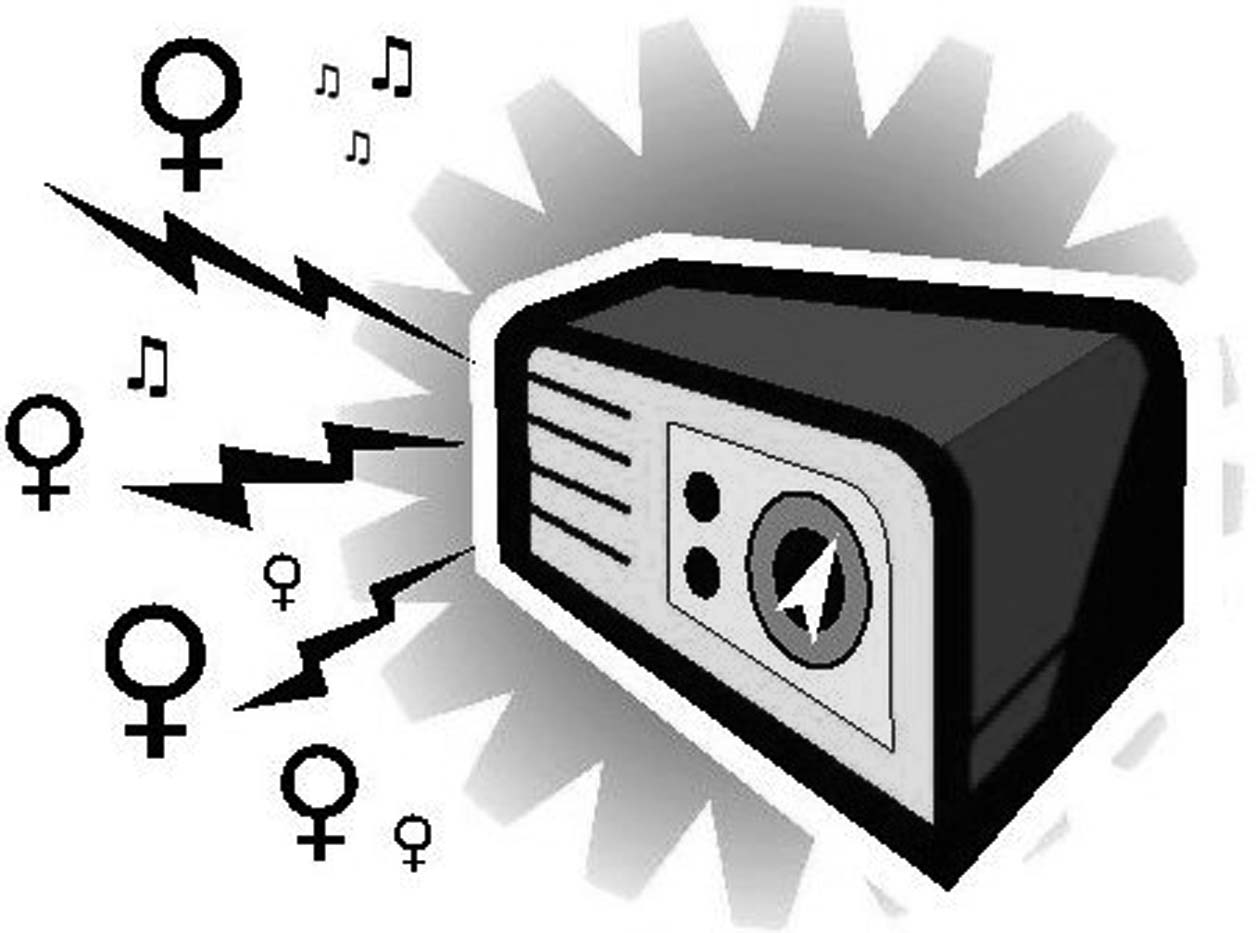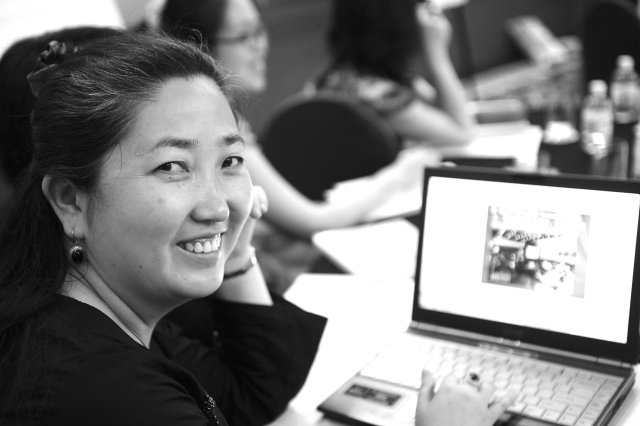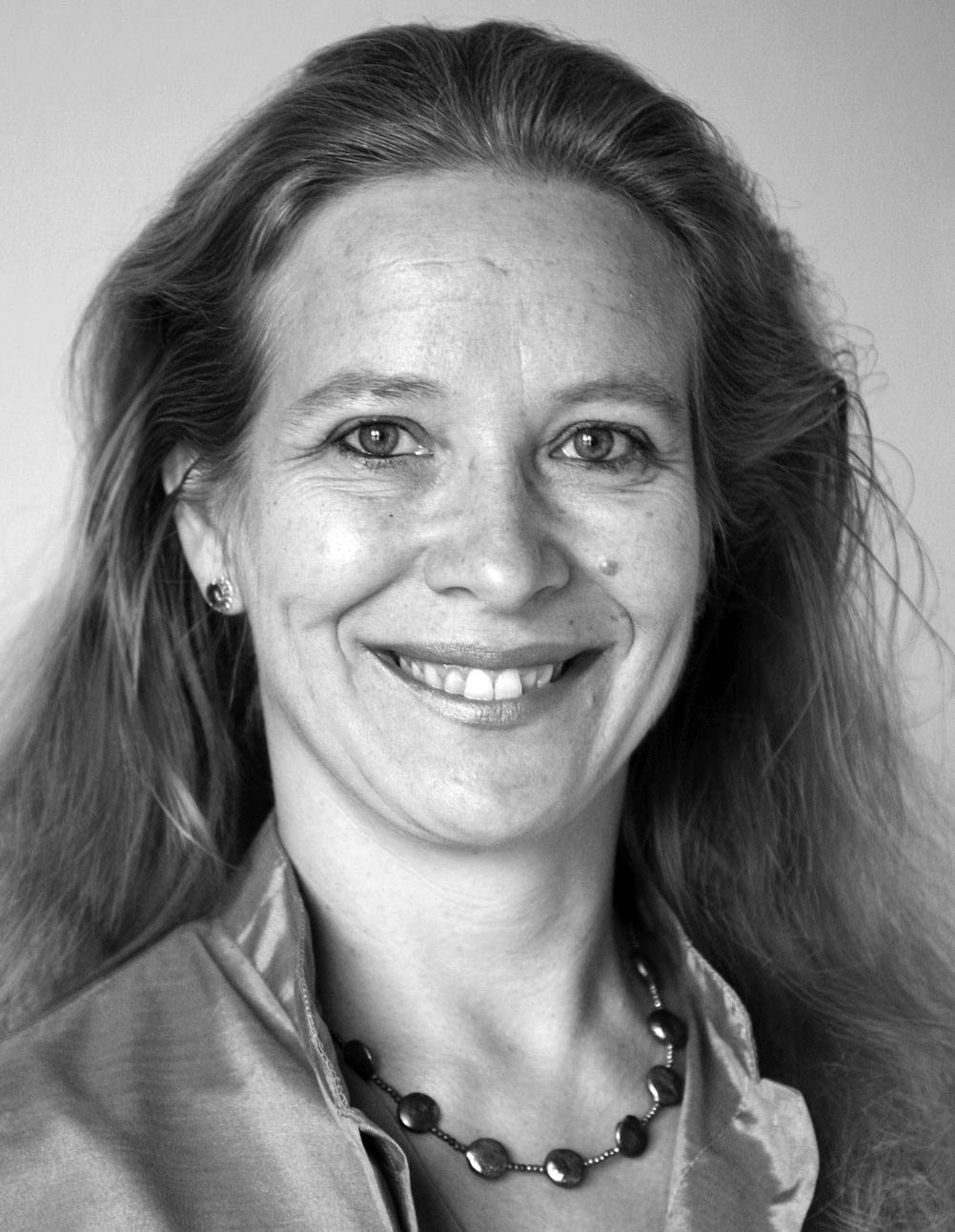
Amplifying Women’s Voices: A Story of Women Making Airwaves for Peace
Women Making Airwaves for Peace (WMAP) is a cross-cultural radio seminar for women broadcasters on the role of community radio in peace building, disaster mitigation and preparedness and climate change organised by Isis International in collaboration with AMARC-WIN Asia Pacific.
The five day seminar brings together around 30 women community radio broadcasters from the Asia Pacific region. It is a space where participants share their experiences, particularly best practices towards engendered peace building and disaster mitigation -- enabling community radio to empower women in crisis situations .The seminar also enhances the skills of the participants in radio production and digital audio editing. It sharpens their perspectives in engendered peace journalism, interview techniques, feminist broadcasting and more.The seminar methodology is interactive as participants are given the opportunity to be resource persons, trainers, facilitators, producers and translators at the same time. Moreover,the participants produce radio programmes during the seminar that they broadcast in their respective radio stations. The seminar is conducted in English, at the same time enabling the participation of Non-English speaking women through peer translation. Isis International was able to provide a substantial number of scholarships to guarantee the participation of grassroots broadcasters.
.The seminar also enhances the skills of the participants in radio production and digital audio editing. It sharpens their perspectives in engendered peace journalism, interview techniques, feminist broadcasting and more.The seminar methodology is interactive as participants are given the opportunity to be resource persons, trainers, facilitators, producers and translators at the same time. Moreover,the participants produce radio programmes during the seminar that they broadcast in their respective radio stations. The seminar is conducted in English, at the same time enabling the participation of Non-English speaking women through peer translation. Isis International was able to provide a substantial number of scholarships to guarantee the participation of grassroots broadcasters.
Pilot Training in Southern Philippines
Pilot trainings were successfully conducted in 2006 and 2007 in partnership with Mindanao Women Writers Inc. and consisted of three workshops in Northwestern Mindanao. From these workshops, a standardised module was developed and a guide on Engendered Peace Journalism was produced. The participants recorded and disseminated among the radio stations in their region a CD with 10 public service announcements on Culture of Peace and Cultural Diversity in the local languages.
WMAP for South East Asia and the Pacific, South and Central Asia
The second run of the training took place in collaboration with AMARC-WIN Asia Pacific on October 16 - 20 2009 in Manila, Philippines with 30 participants from 10 different counties in South-East Asia, the Pacific and Sudan. During the seminar the community radio broadcasters produced three radio programmes on women's role in peace building and disaster mitigation which they broadcasted in their radio stations. They also interviewed each other and the organisers and brought home sound bites to share the unique experience with the listeners in their respective communities.
“For me the highlight of this seminar was learning form the experiences of the community radios in Aceh Indonesia after the tsunami. An experience that could have helped us a lot in Manila during the Ketsana floods.” commented Madella T. Santiago, a participant from the Philippines.
“This training went deeper because we analyzed our existing skills and the problems we encounter in our daily radio work and searched for means to improve ourselves, learning from each other.” explained Adivasulevu Chute from Fiji.
WMAP for South and Central Asia Following the second trainings in the Philippines, 30 women community radio broadcasters from nine countries in South and Central Asia and the Pacific gathered in Mysore, India to participate in the third WMAP seminar on February 13 – 18, 2010.
Aside from peace building, disaster mitigation and sustainable responses to climate change the seminar discussed management and sustainability of community radio stations as well as enhancing women's access to decision making positions.
During this leg of WMAP, participants were given the opportunity to share their experiences on the ground, as community radio practitioners. Specific stories included women community radio journalists in post-conflict Nepal, responses of indigenous women to climate change in India, and integrating women citizen journalists in radio programming. A specific case from Afghanistan was also presented – Radio Sahar's role in Women's Empowerment.
Women Making Airwaves for Peace has proven to be an enriching experiences for its participants. “This seminar was an excellent exposure to community radio. I got energized to do more live broadcasts.” said Preeti Candrasekar from India. For Shahla Saiq from Afghanistan the seminar “... was a women friendly environment where we learned a lot, such as interview techniques.” Parul Gupta from India emphasised: “It was also a space to interact and communicate with other non-english speaking participants.”
The radio programmes produced during the seminars consist of a variety of creative radio formats such as radio reports, story telling, radio drama, studio discussion and feature the experiences of women broadcasters from Afghanistan, Fiji, India, Kyrgystan, Nepal, Philippines and Sri Lanka.
All the outputs of Women Making Airwaves for Peace are available on www.isisinternational.org

Editorial Notes
Isis International is very glad to present you with this issue of WiA with the theme, media, communication, new ICTs and women’s rights and feminist movement building. Many articles in this issue strive to answer this crucial question: How are women re-examining and re-strategising the use of media and communication tools, including traditional media like community radio, popular theater, film and new ICTs such as mobile phone and online social networking, in order to strengthen women’s human rights advocacy and to build a stronger social movement?
Moreover, the North’s commercial media created unidirectional media flows to the South, which were experienced and criticised as neo-imperialist, potentially drowning out cultural and linguistic diversity and the local articulations of people in the South. Only 7 companies: NewsCorp, GE, Viacom, Time Warner, Disney, Wiendi and Bertelsmann – own the television, radio, print, film and electronic media that have global reach. The Big 7, as they are referred to, control the flow and availability of information, and are largely responsible for popularising the images that shape the world opinion.
So where is the space for women and gender justice in the media? How can we claim and reclaim this space as it has been and continues to be controlled and censored by the state, on the one hand, and monopolised by mainstream and commercial media?
In searching for the answer to these questions social movements have had to revisit their media and communication strategies. Independent and community media is at the core of these strategies, recognising both the tremendous potentials and challenges (such as online security, privacy surveillance, e-VAW, etc.) that new ICTs has brought into our lives in recent decades. Community and independent media are owned and run cooperatively, and are directly responsible to the community they serve. Whether in small island states or remote rural mountain locations, or virtually, among like-minded individuals working for social change, people have set up their own communication channels towards effective and efficient information exchange about their concerns on development which are often ignored by mainstream media. Yet these efforts are easily threatened or effectively blocked by a wide spectrum of restrictions and publishing laws in many countries.
In 2010, coming from Isis’ experience in conducting training workshops on community radio such as the Women Making Airwaves for Peace series, the Activist School on Feminist Development Communications was launched. This was the organisation’s way of systematising its capacity building strategies towards gender and development communications for activists, feminists, and development practitioners. The Activist School aims to equip its participants necessary skills on feminist development communications in order to respond more effectively on a variety of issues such as peace, human rights, migration, gender based violence and LGBT advocacy to advance women’s rights and resist the challenges of neo-liberal globalisation, militarism, forms of intolerance, discrimination and fundamentalisms.
For example, in China, migrant workers are using theater and music to mobilise and raise public awareness on workers rights. They also produce the audio programmes in MP3 format on labor rights to disseminate among their members, since there is no way for them to broadcast these programmes.
Community women living in conflict areas in Philippines confidently expressed their issues and concerns through creative and visual art works they produced. These artworks display how they understand the concept of sustained peace and their ideas on the polices should be implemented.
These are but two inspiring stories from women on the ground and how they have used communications strategically to further their advocacies. . We thank the contributors for sharing more inspiring stories and insights in this issue, particularly focusing on “Converging Communications: Empowering Women, Transforming Communities. They are inspiring women from Indonesia, Philippines, Nepal, China, Haiti, India, Thailand, Kenya, Fiji and Mexico, who give us a glimpse of how they have work tirelessly towards the full realisation of women’s human rights, in spite of the many obstacles they face. ”
We especially thank Ms. Bianca Miglioretto, our guest editor to whom credit must be given for her commitment to this project from its conceptualisation to its actual publication. She is responsible for bringing together many active women in community radio movement through the AMARC WIN to contribute to this issue of WIA.
Cai Yiping
Editor-in-Chief
 When I need something, whether it is to renew a government ID, obtain a business permit, a recipe for a pie, or directions to get to a particular location, chances are I'd be able to get all of these just by logging on to the internet. It is that easy and in the years to come, I suspect it's going to be even easier. I won't be surprised if elections are held over the internet soon, to make it convenient and to yield faster results – a new leader in just one click – much like how online banking has made it easier for people to pay bills, make deposits and withdrawals, all in one click. Yet even as I marvel upon how it has made a lot of things so much easier for a lot of people, I also reflect about those who, for whatever reasons, do not have high speed access to the data-highways? Are there any support mechanisms available to guarantee their equal participation as citizens in society?
When I need something, whether it is to renew a government ID, obtain a business permit, a recipe for a pie, or directions to get to a particular location, chances are I'd be able to get all of these just by logging on to the internet. It is that easy and in the years to come, I suspect it's going to be even easier. I won't be surprised if elections are held over the internet soon, to make it convenient and to yield faster results – a new leader in just one click – much like how online banking has made it easier for people to pay bills, make deposits and withdrawals, all in one click. Yet even as I marvel upon how it has made a lot of things so much easier for a lot of people, I also reflect about those who, for whatever reasons, do not have high speed access to the data-highways? Are there any support mechanisms available to guarantee their equal participation as citizens in society?
The so called information society has brought about tremendous changes, both beneficial and challenging for feminist development communications. New information and communications technologies (ICTs) such as email and the internet make organising and coordination across countries and regions for most feminist and other social movements faster and easier. ICTs catalyse and strengthen online based civil journalism and independent and community media. Cyber tools such as blogs, podcasts, social networking websites like Twitter and Facebook, increase spaces for transparency and democracy and have led to progressive transformation in many societies. However, alongside these positive changes are glaring realities such as the continued abuse of women's human rights and the perpetuation of gender based discrimination through the use of the very same ICTs. Moreover, the rapid pace at which new ICTs develop continues to divide societies into the information rich and information poor, creating a digital divide that cuts across class, nation, age, race, and gender.
But new ICTs are only one side of the coin. While women have taken advantage of these new tools, women have not completely abandoned the potential of traditional communication tools. The People's Communications for Development (PC4D) research conducted by Isis International in 2007 reveals that traditional communication tools such as radio, theater, print and face to face meetings are still the most efficient means to reach out to grassroots women. In particular, PC4D shows that among those tools, radio remains the most effective.
For example, I just attended the 10th world conference on community radio by the World Association of Community Radio Broadcasters (AMARC) in Argentina. While the internet was a great asset in the preparation and will most likely also play a vital role in post-conference activities, being at the conference made me realise that there is nothing as substantial, motivating and heart warming as face to face meetings.
In this issue, we look at both the empowering potential of ICTs for women, for instance how lesbians in the Philippines use ICT scpaces to strengthen their sexual orientation and gender identities. It also investigates the threats and challenges new technologies pose to women and marginalised communities. In particular, issues of violence against women and how these are perpetrated and mediated by ICTs. It also looks at lessons learned as well as emerging debates concerning women, media and ICTs, taking into account how women have continued to maximise the use of these new technologies as well as merged these tools with the use of traditional media.
Isis International recognises that the convergence of new ITCs and traditional communication tools. More specifically, the convergence of community radio and the internet offers women the opportunity to transcend from being passive recipients of information to becoming active producers of information while empowering themselves and their communities.
This was clearly demonstrated thorugh the street radio station operated during the AMARC conference in La Plata, and how it has informed participants and by-passers about the ongoings of the conference, while several other radio stations re-broadcasted the signal through the internet and brought the waves of the conference to remote communities.
The huge potential of community radio has yet to be recognised and optimised by many actors in development cooperation and within the community radio movement itself. A survey by Isis International and AMARC-WIN Asia Pacific showed that women are underrepresented in decision making in radio stations and discriminated against when it comes to access to technical production and programme content. Building on the WMAP experience, Isis reaffirms that community radio is instrumental in surfacing women's voices and facilitating women's active participation at all levels of society. Therefore much of the articles in this current issue, particularly in the Community and Independent Media section are dedicated to strengthening women in and through community radio. It presents the Gender Policy for Community Radio, a handy tool towards gender equality in radio stations and suggests how men can contribute to bridging gaping inequalities. Further it features positive experiences of young women producing community radio programmes in Fiji; women claiming access to decision making in Indonesia; broadcasting for women's human rights in Mexico and amplifying silenced voices of women in Nepal, India and Thailand.
This issue also highlights the commitment of AMARC-Women's International Network in Asia Pacific towards engendering the community radio movement. A timely piece as the AMARC General Assembly elected a new board, now composed of five women and seven men. The Women's International Network and many men were targeting a board with gender parity, especially as the rest of the conference included a transversal gender perspective and offered spaces for women's organising and feminist debates. On the other hand the composition of the new international AMARC Board is much more gender balanced than the leadership in most community radio stations in Asia Pacific. Thus I hope it will serve as a catalyst for those male dominated radio stations.
Taking into account that feminist development communications is a vast and rapidly changing field of work, I hopes this WIA provides an insight into creative and innovative use of traditional and new ICTs, and sparks the debates on lessons learned and challenges ahead.
Bianca Miglioretto
Guest Editor
Isis International Associate on Community Radio
AMARC-WIN Asia Pacific, Vice President
Page 3 of 3





 The
The 
 Isis Resource Center holds one of the largest feminist collections of materials in the Global South. With 40 years of publication experience, Isis holds a vast collection.
Isis Resource Center holds one of the largest feminist collections of materials in the Global South. With 40 years of publication experience, Isis holds a vast collection.